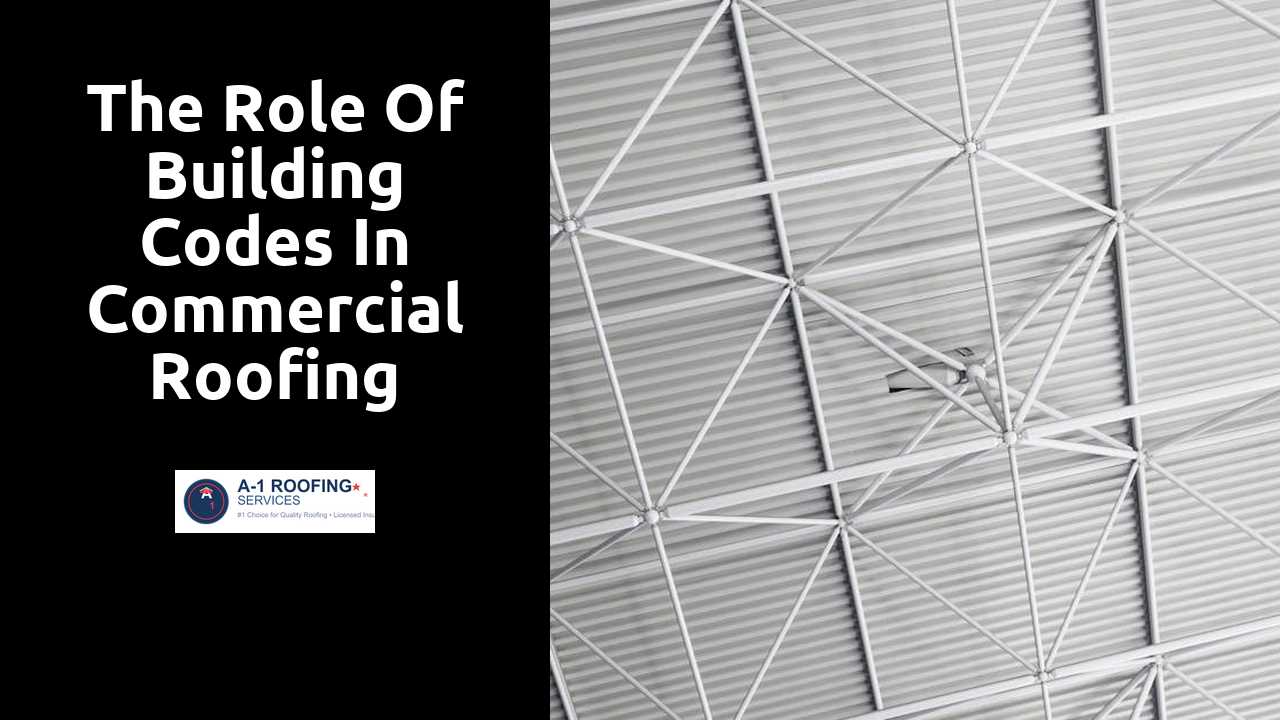
The Role of Building Codes in Commercial Roofing Expenses
Table Of Contents
Common Building Code Violations in Roofing
Commercial roofing projects often experience various code violations that can lead to significant delays and increased expenses. Inadequate or improper flashing installation is a frequent issue, allowing water infiltration that compromises the roof's integrity. Additionally, failure to adhere to proper load-bearing requirements can result in structural weaknesses. Lack of compliance with fire resistance ratings is another common concern, which could lead to severe penalization or even safety hazards.
Another violation pertains to the use of non-compliant roofing materials. Utilizing materials that do not meet local or national standards can not only incur fines but also necessitate costly rework to bring the roof up to code. Proper ventilation requirements are often overlooked, impacting energy efficiency and leading to subsequent problems like condensation or mold growth. These violations can create unexpected financial burdens for property owners who may find themselves facing hefty penalties or the need for significant renovations.
Check out this site for more information.
Avoiding Costly Mistakes
Understanding the specific requirements set forth by building codes can prevent significant financial setbacks for property owners. Many roofing projects encounter costly mistakes when contractors overlook or misunderstand these regulations. Inadequate insulation, improper drainage designs, and non-compliance with material specifications often lead to failures that necessitate expensive repairs or replacements. Additionally, failing to secure the necessary permits can result in fines or delays that further escalate costs and disrupt business operations.
Investing time and resources into thorough planning and compliance with building codes pays off in the long run. Engaging with knowledgeable professionals who can navigate these regulations is crucial. Regular inspections during the roofing process can identify potential issues early, reducing the likelihood of errors that could lead to code violations. By prioritizing adherence to these standards, property owners can not only avoid unexpected expenses but also enhance the overall durability and efficiency of their roofing systems.
Energy Efficiency Standards in Roofing Codes
Energy efficiency has become a focal point in modern building codes, particularly within the realm of roofing. These standards aim to minimize energy consumption, promoting sustainability and reduced utility costs. Roof designs are now required to incorporate materials that enhance insulation, reflectivity, and overall energy performance. By adhering to these specifications, building owners can lower their energy demands, contributing to environmental conservation while ensuring compliance with local regulations.
The adoption of energy efficiency standards can lead to significant financial advantages for commercial properties. A well-insulated roof not only reduces heating and cooling expenses but also prolongs the lifespan of HVAC systems. Many jurisdictions offer incentives for properties that meet or exceed established energy codes, potentially reducing initial investment costs. As the emphasis on sustainability grows, staying informed and compliant with these evolving standards becomes essential for property owners seeking to maintain competitive advantages in the market.
Financial Benefits of Compliance
Investing in compliance with building codes can lead to significant financial advantages for commercial property owners. When a roofing system meets established standards, it often results in enhanced durability and reduced maintenance costs over time. Properties that adhere to safety standards face fewer liabilities, which can lower insurance premiums. This proactive approach can ultimately translate into substantial savings in both short-term expenses and long-term financial planning.
Furthermore, compliant roofing systems may have greater energy efficiency. Many building codes incorporate energy standards that mandate the use of materials and design strategies to reduce heat loss and energy consumption. By installing an energy-efficient roof, property owners can capitalize on lower utility bills and potentially qualify for tax incentives or rebates associated with energy compliance. These financial benefits underscore the importance of staying up to date with building codes.
Future Trends in Building Codes
Advancements in technology and an increased focus on sustainability are shaping the future landscape of building codes. Innovations like prefabrication and 3D printing are becoming more prevalent, leading to a shift in how materials and construction methods are regulated. These changes demand codes that can adapt quickly to incorporate new techniques while ensuring safety and efficiency. As the industry evolves, regulators will likely put greater emphasis on resilience against climate challenges, requiring buildings to not only meet safety standards but also perform well under extreme weather conditions.
Continued emphasis on energy efficiency is expected to play a significant role in future code developments. Building codes will likely enforce stricter requirements for insulation, roofing materials, and HVAC systems. As renewable energy becomes more integrated into construction practices, regulations around solar panel installations and energy-generating roofing systems may emerge. This evolution will encourage property owners to invest in upgrades that align with both compliance and energy efficiency, ultimately resulting in long-term cost savings and environmental benefits.
Preparing for Upcoming Regulations
The landscape of building regulations continues to evolve, prompting commercial builders and roofing professionals to stay informed about upcoming changes. Staying ahead of these trends ensures compliance with new materials and methods that may be incorporated into future codes. Workshops, industry forums, and seminars can serve as platforms for gaining insights into these potential shifts. Engaging with local building authorities and industry associations can also provide updates that are critical for long-term planning.
Anticipating regulatory changes offers an opportunity for proactive adjustments rather than reactive measures that often incur additional costs. Investing in training for staff members can help facilitate smoother transitions when new codes are implemented. Reviewing current roofing systems against anticipated regulations allows contractors to make necessary renovations or replacements in advance. This foresight not only mitigates potential penalties but also enhances the overall durability and efficiency of roofing projects.
Related Links
Seasonal Factors and Their Effect on Commercial Roofing PricingCost Comparison: Traditional Roofing vs. Modern Solutions